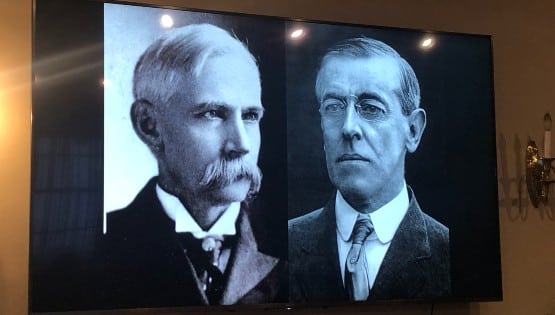
What you haven’t read about: how the tweaks are working.
Well, you kinda know a little bit there.
Macro-level, the ‘Hoos are scoring 1.230 points per possession this season, ranked second nationally, according to KenPom.com.
The 2017-2018 team scored 1.152 points per possession, 30th nationally.
That doesn’t look like much, at first glance, because of the decimal points and all, but it’s an improvement of 6.8 percent.
Translated over Virginia’s 59.3 possessions per game, you’re talking 4.02 points per game improvement there.
That exposes you to possible losses to N.C. State in the regular season (a one-point overtime win), a loss to Oregon in the Sweet Sixteen (a four-point win), another loss to Purdue in the Elite Eight (another OT win).
So, it’s a big deal, the improvement on offense.
Understanding how that macro-level improvement is the next thing.
Bennett has famously loosened up his strict reliance on the mover-blocker offense to add more variety – continuity ball screens, middle third, quick hitters that work off pindown screens freeing up three-point shooters.
It might also seem that you’re seeing at least a few more possessions per game where the ‘Hoos are willing to get out in transition, and otherwise take a good shot early in a halfcourt set, if the opportunity is there.
Funny how one last macro number tells us that what we think we’ve been seeing there isn’t exactly taking place. According to KenPom.com, Virginia averaged 20.9 seconds per offensive possession last season, and is again averaging 20.9 seconds per offensive possession this season.
A deeper dive, via Hoop-Math.com, shows the percentage of shots taken by UVA 25+seconds into an offensive possession dipping from 26.4 percent of all shots from the field in 2017-2018 to 20.3 percent in 2018-2019.
Teams tend to be less effective on those shots, as Virginia well knows – the Pack-Line is predicated on that principle, forcing opponents to eat up shot clock, then hoisting up rushed shots to beat the buzzer.
Virginia had an effective field-goal percentage of 47.3 percent on late-shot-clock attempts last season, and is up slightly, to 48.1 percent, this season.
Its results on halfcourt sets have improved overall – the 2018-2019 effective field goal percentage is 54.2 percent, versus 51.9 percent in 2017-2018 – and probably not surprisingly, it’s because the offense has been more effective earlier in the shot clock.
This is my math, based on the numbers from Hoop-Math.com, but what I have is Virginia putting up an effective field goal percentage of 56.0 percent on halfcourt sets on shots before the 25-second mark on the shotclock.
UVA had an effective field goal percentage of 53.8 percent in those situations last season.
That, plus a slight uptick in the number of transition shots – 10.2 percent of Virginia’s shots last season were in transition, with an effective field goal percentage of 59.5 percent; 11.9 percent of the shots this season are coming in transition, with an effective field goal percentage of 62.1 percent – is how you wring more points out of the same number of possessions.
Actually, slightly less possessions – UVA averaged 59.4 possessions per game last year.
Why are the ‘Hoos playing in the Final Four this weekend? Because of all of that.
Column by Chris Graham

Augusta Free Press coverage of the 2019 postseason is presented by Bear Creek. Serving Waynesboro, Charlottesville, Harrisonburg and surrounding communities, Bear Creek provides a hassle-free process to help homeowners create outdoor living spaces that bring people together. Schedule a consultation at BearCreek.co.










